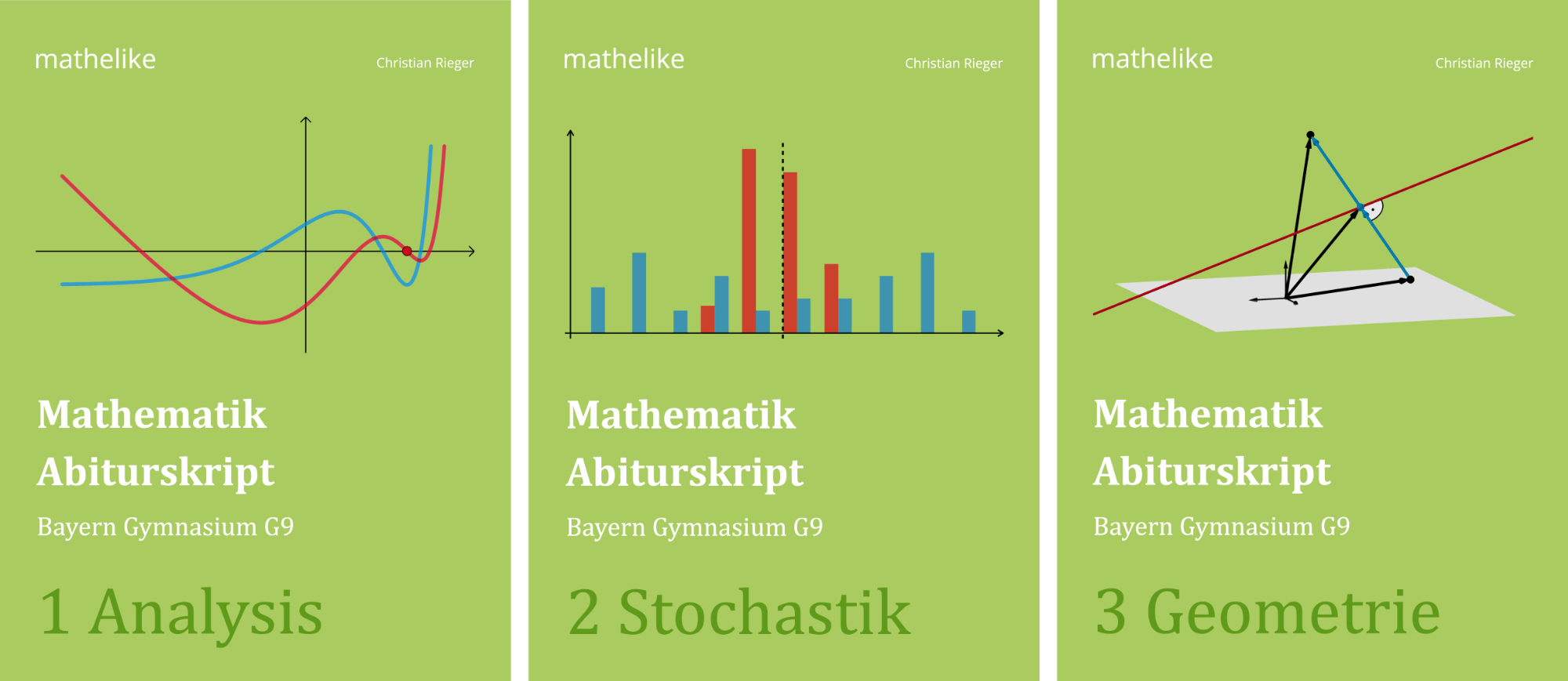Ermitteln Sie die Koordinaten der Punkte, die alle Graphen der Schar gemeinsam haben.
(3 BE)
Lösung zu Teilaufgabe 2b
\[h_k(x) = (x - 3)^k + 1; \;D_{h_k} = \mathbb R, \; k \in \{1;2;3;\dots\}\]
Für gemeinsame Punkte aller Graphen der Schar muss der Term \((x - 3)^k\) für alle \(k \in \{1;2;3;\dots\}\) denselben Wert annehmen. Hierfür gibt es zwei Möglichkeiten.
Für alle \(k \in \{1;2;3;\dots\}\) gilt \(0^k = 0\) und \(1^k = 1\). Somit muss entweder \(x - 3 = 0\) oder \(x - 3 = 1\) gelten.
\[h_k(\textcolor{#e9b509}{3}) = (\textcolor{#e9b509}{3} - 3)^k + 1 = 0^k + 1 = \textcolor{#0087c1}{1}\;\Rightarrow \; (\textcolor{#e9b509}{3}|\textcolor{#0087c1}{1})\]
\[h_k(\textcolor{#e9b509}{4}) = (\textcolor{#e9b509}{4} - 3)^k + 1 = 1^k + 1 = \textcolor{#0087c1}{2}\;\Rightarrow \; (\textcolor{#e9b509}{4}|\textcolor{#0087c1}{2})\]
Alternative Formulierung:
Es seien \(k_1\) und \(k_2\) zwei beliebige aber verschiedene Werte von \(k \in \{1;2;3;\dots\}\) \((k_1 \neq k_2)\).
Für gemeinsame Punkte der Graphen von \(h_{k_1}\) und \(h_{k_2}\) gilt:
\[\begin{align*}h_{k_1}(x) &= h_{k_2}(x) \\[0.8em] (x - 3)^{k_1} + 1 &= (x - 3)^{k_2} + 1 &&| -1 \\[0.8em] (x - 3)^{k_1} &= (x - 3)^{k_2} &&| \; 0^{k_1} = 0^{k_2}\;\vee \; 1^{k_1} = 1^{k_2}\;(k_1 \neq k_2) \end{align*}\]
\[\Rightarrow \; x - 3 = 0\; \Rightarrow \; x = \textcolor{#e9b509}{3} \enspace \vee \enspace x - 3 = 1 \; \Rightarrow \; x = \textcolor{#e9b509}{4}\]
\[h_k(\textcolor{#e9b509}{3}) = (\textcolor{#e9b509}{3} - 3)^k + 1 = 0^k + 1 = \textcolor{#0087c1}{1}\;\Rightarrow \; (\textcolor{#e9b509}{3}|\textcolor{#0087c1}{1})\]
\[h_k(\textcolor{#e9b509}{4}) = (\textcolor{#e9b509}{4} - 3)^k + 1 = 1^k + 1 = \textcolor{#0087c1}{2}\;\Rightarrow \; (\textcolor{#e9b509}{4}|\textcolor{#0087c1}{2})\]


